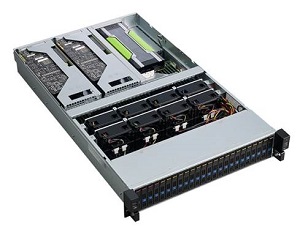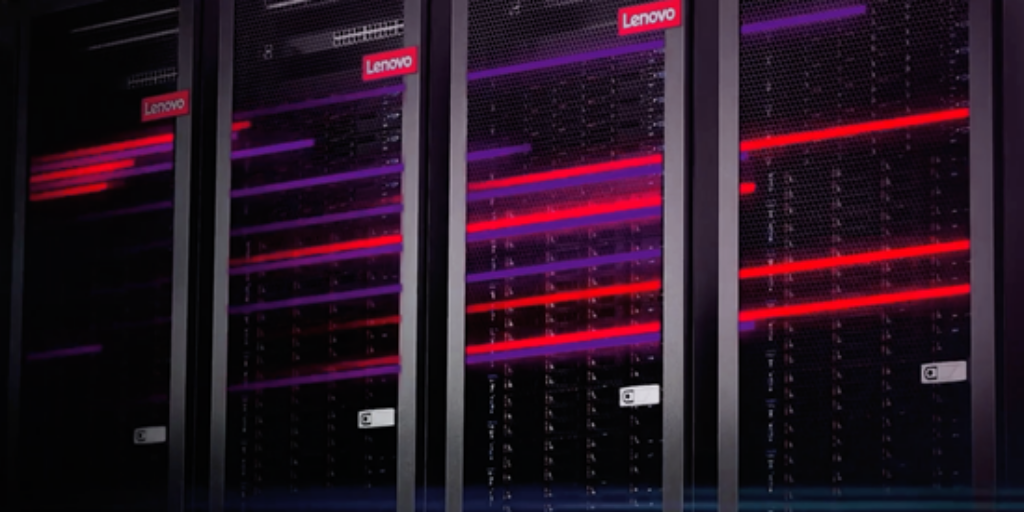Sponsored Post
 Introduction
Introduction
It is well documented that the amount of data that is being produced on a daily/monthly/yearly basis is growing at astronomical rates. IDC (Reference 1) have estimated that by 2025, 175 zettabytes of data will be created each year and will continue to grow. The data will be in both structured and unstructured forms and there will be major logistical challenges in moving this data from the devices that create the data to where the data is acted upon and decisions made.
Promoting Edge With Private Cloud
Edge computing refers to the computing paradigm that moves the computation and storage of the data closer to where the data is generated or where it is needed. In this model, the bandwidth from the edge of the infrastructure to the longer term storage or where the higher powered analytics reside is reduced as well as increasing response times (lower latencies) in certain instances. The appropriate computing and storage power, optimized and balanced, is needed at or near the edge to not waste space and energy.
In a highly distributed and optimized data environment, the data that is generated will be aggregated and then acted upon closer to where decisions based on the data need to be made. While a certain percentage of the data can be passed to the cloud, latency and security sensitive data needs to be processed locally. This is also the case of large amounts of information that can be discarded after initial ingest and analytics. For example, with the Covid-19 pandemic, we have seen how critical the management of hospital resources is to quickly react to unexpected threats. Being able to provide a real-time response to fast changing situations can save lives. (Reference 2)
 New Technologies – 5G, AI & IoT
New Technologies – 5G, AI & IoT
In addition to the massive amounts of data that is now being generated, new technologies that are in early stages of deployment will surely increase the amount of data that is generated as new applications come on-line. This includes the new 5G communication standard that speeds up network bandwidth with lower latencies. The Internet of Things (IoT) finds a perfect growth partner in 5G, which provides support to the increasing number of connected devices.
However, it is not as simple as stating that some data that is generated will remain at the edge and some data will be transmitted to more centralized and larger data centers (both cloud and on-premises). For example, the increasing use of Artificial Intelligence (AI) in applications such as Factory 4.0 or Smart City will need to process gigabytes of data locally but will also need to communicate bi-directionally with both data centers and other edge devices to enable intelligent solutions such as machine vision, autonomous driving or advanced security. Optimized edge hardware will be critical to the smooth integration of edge technologies to and from the back end data centers.
Advantech Solutions
Advantech is a leader in providing a wide range of servers that facilitate efficient computing and storage at the edge. For example, by using the SKY-7221 software defined storage server, organizations can easily process a large volume of data with very low latencies. Data that is obtained can be filtered, aggregated and analyzed closer to where the data is generated, reducing clogging up networks with un-needed data. The SKY-7221 server also acts as a powerful computing engine for analytics through the use of dual Intel 2nd Gen Xeon Scalable Processors that also can contain powerful accelerators. As mentioned before, AI at the edge is a novel infrastructure concept which can speed up decision making in real-time. Besides powerful compute and flexible storage a server sitting at the edge must have powerful and fast networking capabilities. The SKY-7221 is a high bandwidth, low latency system that easily integrates with applications that require 5G capabilities. More information about the Advantech SKY-7221 server can be found here. (Reference 3)
 In addition to superior hardware designs, Advantech offers an optimized edge-to-cloud software platform for IoT. By working with key customers, Advantech was able to develop and fine-tune a software stack that includes security features and user defined access pathways that ensure the privacy of data as the data moves from the edge to more centralized servers. The software stack integrates with Advantech WISE-STACK Private Cloud solution (Reference 4) which has been tested in IoT environments and with software solutions that require AI capabilities. The advantage when using WISE-STACK is that applications that require high availability, elastic expansion and advanced security can now have all these capabilities concurrently and integrated without having to piece together various software packages. With optimization of WISE-STACK to work with the SKY-7221 hardware, new and innovative applications can easily be developed that take advantage of cutting-edge hardware, robust storage and secure and fast networks. More information about the WISE-STACK can be found here.
In addition to superior hardware designs, Advantech offers an optimized edge-to-cloud software platform for IoT. By working with key customers, Advantech was able to develop and fine-tune a software stack that includes security features and user defined access pathways that ensure the privacy of data as the data moves from the edge to more centralized servers. The software stack integrates with Advantech WISE-STACK Private Cloud solution (Reference 4) which has been tested in IoT environments and with software solutions that require AI capabilities. The advantage when using WISE-STACK is that applications that require high availability, elastic expansion and advanced security can now have all these capabilities concurrently and integrated without having to piece together various software packages. With optimization of WISE-STACK to work with the SKY-7221 hardware, new and innovative applications can easily be developed that take advantage of cutting-edge hardware, robust storage and secure and fast networks. More information about the WISE-STACK can be found here.
Conclusion
Advantech has developed highly optimized servers that enable new applications to be developed that utilize the power of edge computing with the back-end processing and storage of hybrid clouds. With the growth of the Industrial Internet of Things (IIoT), the integration of edge data capture and analytics with fast networking will open up a new category for applications that can adapt to changing data requirements. IIoT devices provide valuable data that needs to be analyzed, but not necessarily transmitted via networks beyond the edge. As IIoT becomes more ubiquitous, IT suppliers that can provide integrated hardware and software, will become an obvious choice to partner with to offer more intelligent services. Visit www.advantech.com.
References
[1] https://www.forbes.com/sites/tomcoughlin/2018/11/27/175-zettabytes-by-2025/#52c8e8835459
[4] https://www.advantech.com/srp/wise-stack-private-cloud



